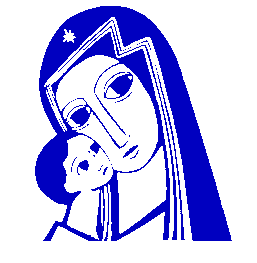Mark Elvins OFM Cap. A paper given to members of the Canterbury branch of the Sociery on 27 September 1997 - The Ecumenical Society of the Blessed Virgin Mary.


«Mary as a model disciple exercises a nuternal example to her children, and is also an exemplar rn her obedience to the will of God. As our Lord declares in Mark 3. 35, 'whoever does the will of God is my brother, sister and mother,. This, far from diminishing Mary's maternar patronage, enhances it, for as an exemplar she is pre- eminently the instrument of God's will. This obedience is ;;;f ;r-*"ternar role, as she tells the servants at the marriage feast at cana: ,Do what-ever he tells you,. As a mother she is also a reconciler in bringing us together, and in uringing iogether our various theological traditions. As ghe "o"i"oi prayer states: .we fly, to her patronage in our need to be reconciled with our Mother. Her pondering role prefigures the process of development in the pondering Church. Thisprocess is outlined in the second vatican council (Dei verbum g): .The church is alwayl advancing towards the plenitude of divine truth, until "r"n*ully are fulfilled in her" the words of God '1o.': maternal patronage over an extended family of believers also places her in the role of chief intercessor of tf,at extended family, and in obedience to her Son she prays 'that they all may be one'. In Anglicanism since the seventeenth century there has been a gradual deverolment in the undeistanding of Mary,s part in God,s pran of redemption, fanned by the oiford Movement and the subsequent Tractarians, who in their study of the Fathers rediscovered Mary as Theotokos. Newman was the great agent of this early development, and A. T. Wirgman's classic The Blessed Virgin Mary qnd the Whole Company of Heaven was a natural successor to Pusey's Eirenicon. In more recent years Dr Eric Mascall edited a symposium entitled Mother of God (London, 1949), which was a collaboration with the Orthodox, and he went on to become a founder-member of this Society. This brief evidence confirms how Marian devotion has spread to every denomination, but for the Roman communion the tuming-point came in 1958 with the first Mariological-Marian Congress at Lourdes. There was a departure from old exaggerated opinion that had made Mariology so contentious a matter with other denominations, and Mary was considered within the context of Christology and ecclesiology.s The second turning-point was the exhortation of Pope John Paul II n Marialis Cultus in which the future of Mariology was declared to be liturgical, biblical and ecumenical: and now we are gathering the fruits of our mutual development in understanding, our converging ecclesiologies, and our shared devotion to Mary, the Mother of God, the Mother of the Church, and the Mother of all believers.»
